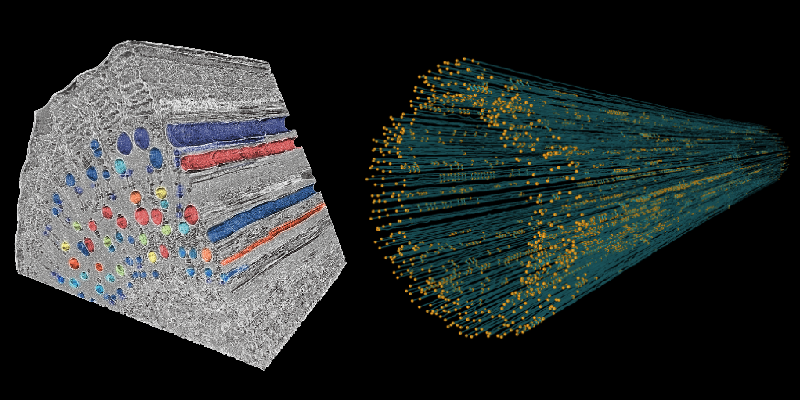
Network properties and hydraulic function of plant vascular tissue
Xylem tissue serves as the path for water flow from roots to leaves, where it is lost to transpiration. Classical understanding of xylem structure and function revolves around the properties of individual conduits, which are extrapolated to the entire tissue under untested simplifying assumptions. Recent advances in imaging technology have allowed us to describe the patterns of connection among these conduits, replacing the old scaling assumptions with explicit computational models. Our flow simulations based on detailed 3D reconstructions of xylem conduit networks from high-resolution µCT imaging show how the connection patterns among individual conduits affect the overall hydraulic properties of xylem and shape its evolution. We are identifying connection patterns conducive to hydraulic efficiency and drought resistance in plants, or trade-offs between the two.
Collaboration:
Craig Brodersen, Yale University, USA
Publications:
Bouda M, Windt C, McElrone A, Brodersen C (2019) In vivo pressure gradient heterogeneity increases flow contribution of small diameter vessels in grapevine. Nature Communications 10(1):1-10; doi:10.1038/s41467-019-13673-6.

